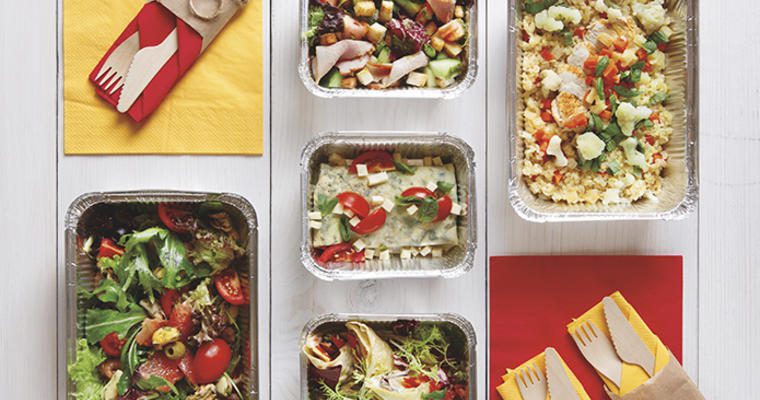The U.S. Census Bureau reported that Americans spent more money in restaurants than they did in grocery stores in 2015. It was the first time this has happened since the government started tracking this metric.
That seems like cause for celebration for those of us in the restaurant industry, doesn’t it?
Don’t break out the party hats quite yet. The reasons behind this spending reversal may create some real challenges for the foodservice industry. But there is also opportunity for operators who take steps now to address these underlying issues.
Step one is to identify and understand certain gaps that are emerging in the restaurant business.
Gap 1. Restaurant sales versus restaurant visits
Americans are spending more in restaurants, but they’re actually eating out less often. NPD Group, a Port Washington, New York-based research and consulting firm, reports that total restaurant visits declined in the third quarter of 2016—and quick-service restaurant traffic, which represents 80 percent of total industry visits, dropped for the first time in five years.
The upshot is that consumers are paying more for fewer restaurant meals. The average restaurant meal price has risen by 21 percent over the past 10 years, according to NPD. Real wages, meanwhile, have barely budged for most Americans. Lack of disposable income is one of three main reasons for declining restaurant visits, according to NPD.
Gap 2. The cost of dining out versus eating at home
The Bureau of Labor Statistics reports that the cost of food eaten away from home, which includes restaurant prices, rose 2.3 percent in the fourth quarter of 2016 compared to the same quarter 2015. In contrast, grocery prices fell by 2.2 percent. The Chicago Tribune reported in November 2016 that the difference in prices between eating out and eating at home is the widest it has been in 30 years.
Gap 3. Restaurant sales versus restaurant profits
Overall restaurant sales are up and wholesale food prices are down, but operator margins are tighter than ever. Labor costs are the primary culprit. PayScale Inc., a Seattle, Washington-based research firm, reported that foodservice and restaurant wages grew by 3.6 percent over the past year, far outpacing the national average.
Add rising healthcare costs, state and local minimum wage increases and other mandates, and the line between profit and loss becomes even thinner. In a perfect world, restaurants would be raising menu prices across the board, especially since they’ve been holding the lid on them since the recession. But competition—from other restaurants and from grocery stores expanding their prepared meal offerings—make that a dicey proposition.
6 ways to close the gaps
So how do you lure more people back into your restaurant more often and still protect your margins? Here are a few ideas.
1. Employ a barbell strategy. Consumers see grocery prices falling and wonder why restaurant prices aren’t following suit. They’re in the mood for savings. One way to satisfy them is to approach your menu as a barbell—big at the ends, narrower in the middle and perfectly balanced.
“One end of the barbell represents your brand differentiators,” explains Gordon Food Service Commercial Segment Manager Doug Owens. “If you’re known for burgers and ribs, for example, they’ll occupy that end. You need to protect the value of these differentiators by maintaining their premium prices.”
The other end of the barbell consists of non-core products. That’s where competitive price positioning can occur. Identify menu items on which you can afford to cut prices and then promote the savings with wild abandon. Once you get discount-minded customers in the door, tempt them with the quality of your burgers and ribs.
2. Analyze your menu. Going through your menu with a fine-toothed comb helps identify items that have margins to play with, in addition to dishes that are dragging down your gross profits. It will tell you if your brand differentiators are priced appropriately to maximize profits. Menu analysis should be a quarterly process, but it’s often neglected. Current conditions make it imperative to do one now.
3. Analyze your costs. Look everywhere you can to improve margins by cutting costs, Owens urges. “Are you executing things in the most efficient manner? Can you change production methods, use value-added products, cross-utilize more products? Is your menu the right size to minimize inventory costs?”
4. Expand your convenience options. Grocery stores and C-stores are offering higher quality and more unique prepared-food items than ever before. Consumers can make a quick stop after work and pick up all they need for an easy meal.
Think about what you can do to compete with this phenomenon, which is more about convenience than price. Do you offer takeout meals? Do you make the pick-up process as smooth as possible? Do you offer a selection of prepared meals your guests can take home for tomorrow’s lunch or dinner? Do it right and you’re an even easier option for consumers.
5. Emphasize the experience. Dining out is qualitatively different from eating at home, and you need to leverage this distinction. It starts with the food. “Consumers value dishes they can’t easily make at home or find at nearby restaurants,” says Gordon Food Service Corporate Consulting Chef Gerry Ludwig, CEC. Make sure your menu satisfies consumer cravings.
Service and ambiance are just as important. Guests need to be pampered. Your menu and environment should support socializing and relaxation. Pick up a meal at a grocery store and you still have to set the table and wash the dishes; that’s a clear advantage for restaurants.
6. Stay relevant. The third main reason for declining restaurant visits is the failure by some operators to keep up with eating trends. Make sure you pay attention to what’s going on in restaurants and grocery stores in your neighborhood and around the country, then adjust your business plan accordingly.
At this point there’s no way of knowing whether the conditions that opened up these gaps will be temporary or long-lasting—but failing to account for them can give your competition a leg up in the short term. Work on closing them today.











